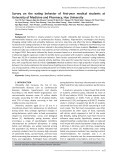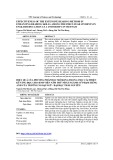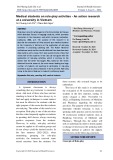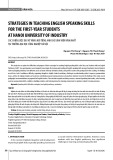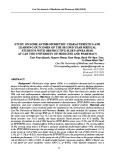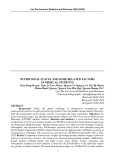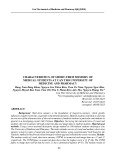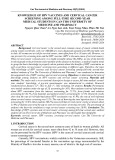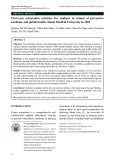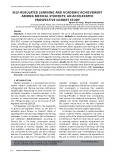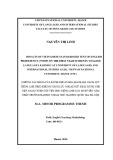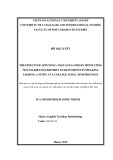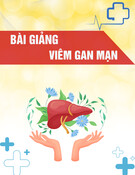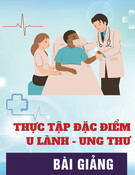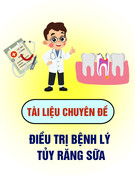
72
Journal of Health and Development Studies (Vol.08, No.01-2024)
Nguyen Thi Thu Huong et al.
DOI: https://doi.org/10.38148/JHDS.0801SKPT23-108
ABSTRACT
Objective: The orientation activity at the beginning of the school year is one of the important sessions for
medical students, especially first-year students. Well-oriented medical students will contribute to training
appropriate future medical human resources, especially in preventive medicine and public health with
the motto that prevention is better than cure. To describe career orientation and feedback on the first-year
orientation activities of medical students at the School of Preventive Medicine and Public Health in 2022.
Methods: A mix-method of quantitative and qualitative was conducted. We carried out quantitative
interviews through self-completed questionnaires on 181 first-year students with three majors: Preventive
Medicine Doctor, Bachelor of Public Health, and Bachelor of Nutrition. In addition, qualitative research
was conducted through 3 focus group discussions on the above 3 majors.
Results: Orientation information came mainly from parents, and family members (55.2%) and from
social networks (56.9%). Students generally had an understanding of their major with 22.7% of students
was full understanding and 74% of those was partial understanding. Out of 79.6% of students were
satisfied with their major and the reason for choosing the major showed were their performance capacity
(46.5%) and their favourite (44.2%). Out of 53% of students rated as satisfied and 12.2% rated as very
satisfied with the contents of the first-year orientation activities.
Conclusions: Students responded well to the orientation activities at the beginning of the year. Besides,
further suggestions that it is necessary to have information shared by former graduates about job
opportunities to access the realistic information and current sittuation.
Key word: Orientation activities, first-year students, preventive medicine, public health.
Corresponding author: Nguyen Thi Thu Huong
Email: ntth@hmu.edu.vn
1Department of Health Economics, School
of Preventive Medicine and Public Health
2
Department of Health Education and Promotion,
School of Preventive Medicine and Public Health
3
Department of Training, Research Management
and International Cooperation, School of Preventive
Medicine and Public Health
4
Department of Research Methodology and Biostatistics,
School of Preventive Medicine and Public Health
First-year orientation activities for students in School of preventive
medicine and public health- Hanoi Medical University in 2022
Nguyen Thi Thu Huong1*, Pham Bich Diep2, Le Dinh Luyen1, Dam Thi Ngoc Anh3, Tran Kim
Thanh3, Do Thi Thanh Toan4
ORIGINAL ARTICLES
Submited: 24 November, 2023
Revised version received: 24 February, 2024
Published: 29 February, 2024
DOI: https://doi.org/10.38148/JHDS.0801SKPT23-108
INTRODUCTION
Career orientation is a comprehensive and
continuously updated educational concept
to provide individuals (students) at training
institutions with information and experience,
helping them to have good preparation for
choosing future jobs (1). An overview of
research in the world and in Vietnam shows
that the choice of medical field was influenced





